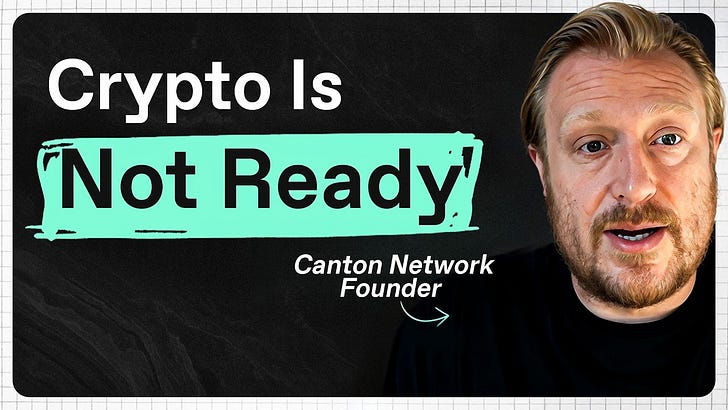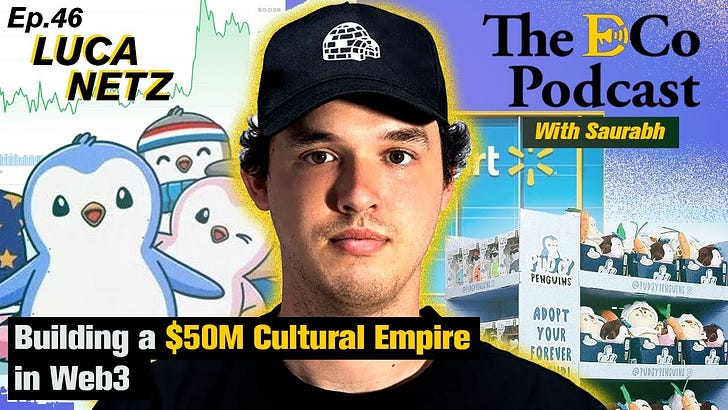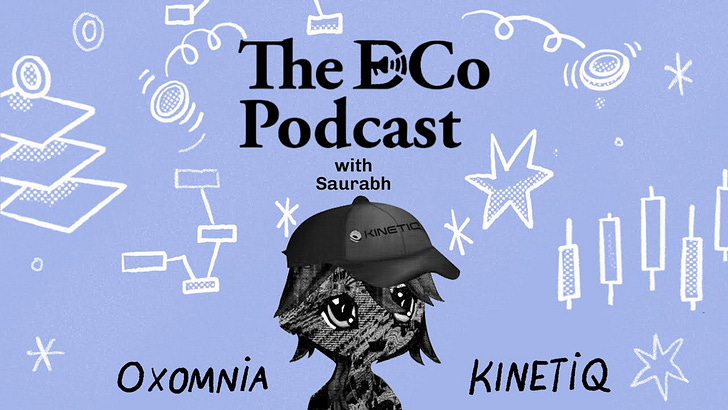Hello!
A long time back, when we started writing long-forms, I used to think we should create content that is a ‘“full-course meal” for our audience. What I meant by that, is that someone should be able to spend a while, and get a complete picture of what is going on. Today’s issue, may just be the most complete meal we have shipped to your inbox in a while.
We have been thinking extensively about gaming internally. But we had to test the validity of our hypothesis by talking to founders. Today’s issue includes a podcast and a long-form from two founders that have been dominant in the Indian gaming landscape. They give us insights from the perspective of founders that interact with a large market, on a daily basis.

For the podcast, Sid and Saurabh were joined by Anirudh Pandita from Loco. He is the founder of Pocket Aces, a digital media company that attracts some 700 million views on its videos each month. A few weeks prior to us recording our podcast, it was partly acquired. He has also been building Loco, a streaming platform oriented towards gamers in India. They raised over $42 million from funds including Hashed, Maker’s Fund and Lumikai last year.
The conversation is rich with context on the evolution of India’s gaming landscape, the factors that contributed to it and the unit economics of building in emerging markets. Listen to the podcast on
You can also use this link to subscribe to the podcast on your favorite client.
For the long-form, I collaborated extensively with Ishan Shrivastava from Glip. He was kind enough to spend hours explaining user behaviour, the challenges of Web3 native gaming and how firms are optimising for growth within the sector. Read on, below.
The Evolution of Glip
Recently, I noticed two numbers from Lumikai's gaming report for 2023:
India's estimated revenue per paying user for gaming apps has grown from $2 to $19.2.
Only about 0.3% of India's gamers reported paying with cryptocurrency.
The Indian gaming landscape is a strange world that simultaneously fascinates me and goes above my head. Part of the reason is that, in my mind, gaming is the beautiful world one enjoys in Red Dead Redemption or Age of Empires, but in the market's mind, a huge portion of what constitutes gaming is what is considered 'real money games'.
'Real money games' is a fancy way of referring to gambling. And whilst I will hold back on passing judgments about the model, it is worth mentioning that some ~100 million+ users in India engage with the sector. The sector's explosive growth has become a lucrative source of revenue for the Indian government. Why does any of this matter?
It is indicative of a few things:
There is interest in gaming as a sector. After China, India is one of the largest markets for gamers. China saw 25.9 billion downloads of casual games, while India had 15.4. The USA, in third, had a minuscule 4.7 billion in comparison.
Notice that 0.3% figure for cryptocurrency use? It is a small figure, but small parts of large numbers add to meaningful sums. At 0.3% of 140 million users, we are looking at ~500k users who engage with cryptocurrencies for gaming. The caveat is that many of them may have used crypto as a mechanism to gamble instead of buying assets on a Web3 native game.
As a market, India is fascinating because of its size and the fact I consider it home. So, when I had a chance to learn from Glip's founder about their journey in the industry, I hopped on the opportunity. Much like Axie's story (from 2019), theirs is still being written. And if you study how it evolved, it overlays well with what went wrong (and right) with Web3 gaming as a concept.
In today's issue, I'll be breaking down the evolution of Glip, their observations on user behaviour in crypto and how they are using emergent primitives to crack problems in one of the largest gaming markets in the world.
Fair warning before we begin. When writers on the internet pick a start-up to write about, it is for one of two reasons: they became a unicorn or imploded. Glip is neither. Like the metaverse and Web3 gaming, their story is still being written. I decided to spend time on it because it is a perspective on what is succeeding (and failing) with the industry from an operator's perspective. You will see me constantly alternating between Web3 gaming and Glip's story; the tales are intertwined.
Inception
Glip's story, like that of many Indian start-ups, starts with the founder falling in love with games in high school. Parth studied programming in university with the intention of building games. He did a few stints at Adobe and built several start-ups. His first break came in 2015 with a hostel booking platform named Zo.
It was famously acquired (or not?) by OYO Rooms - a hospitality chain. He followed that experience by co-founding Hiration – a platform that helps users create better resumes. He was also the head of product at Spinny, a unicorn in India facilitating used car sales.
Glip's founder had the traditional arc of Indian entrepreneurship: A founder wants to build something cool, starts with experience at an enterprise, exits to launch a start-up, encounters hassles and grinds, and eventually finds some initial success. Whilst stints at Hiration and Spinny seemed opportunistic, Parth's attempt with Glip felt like a return to his love for gaming. But that transition didn't happen overnight.
In 2020, after exiting Spinny, Parth was tinkering with a potential P2P live-streaming app that relied on Lightning for payments. He quickly realised that the payment infrastructure could be commoditised, but distribution couldn't. So, he quickly shifted his focus from developing gamer payments to building a short video platform like TikTok for mobile gamers. Thus, Glip was born. But what does it do?
Glip makes tooling for recoding mobile game sessions. Think of it like this: Twitch mimics conventional news outlets in that a serious streamer needs a sufficiently powerful machine, a mic and a camera. To pay for this, the gamer must play with a large enough user base to build a loyal audience. What if you could do all that on a mobile device? Glip solves that.
As the pandemic set in, it became evident that more gamers would be online for extended periods. They would also need tools to record, edit and upload clips easily. Gamers flocked to the product for three primary reasons. To watch their game-play (or that of friends), improve how they play, share it with friends, and upload it on social networks with larger userbase.
These videos had a glip video mark on them, so it helped with creating distribution for the product.
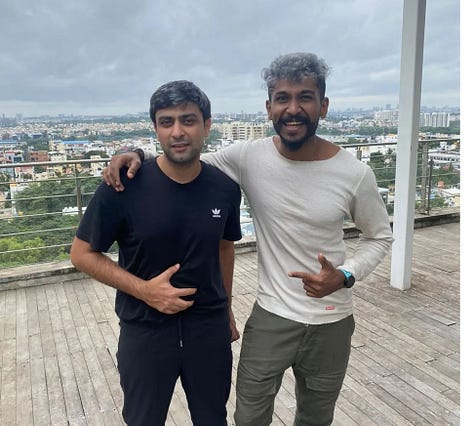
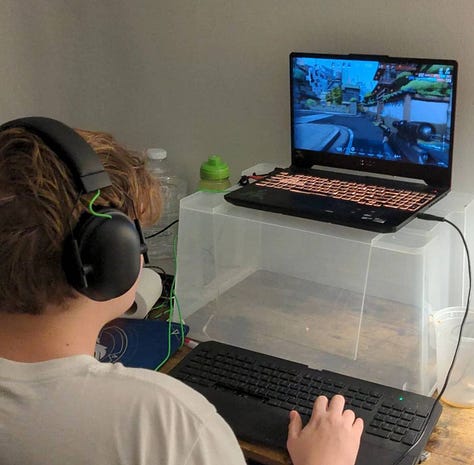
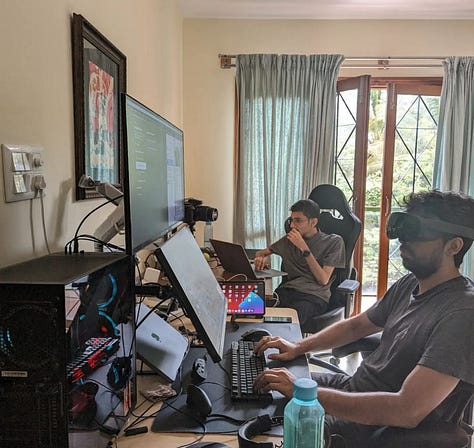
I was curious to understand why gamers spend time watching other gamers play. For context, gamers spent around 50 billion hours watching content in 2018 alone. Glip has seen some 12 million installs and a steady stream of 1 million monthly users. But what makes gamers want to watch somebody else play? What's the fun in that?
As it turns out, part of the reason is mimicry. Humans may feel excitement, fear and often frustration when watching another person experience intense emotions. When we watch game streams, we are aided simultaneously by the events that occur within the game and the emotional turbulence of the player engaged in it.
In other words, streaming builds culture out of games by giving them a sense of relatability. By watching gamers you admire enjoy or struggle in a game, you extend the game from merely an experience occurring on-screen to a shared emotion.
Naturally, there are other reasons. Sometimes, people watch videos of gamers as escapism, the way we watch movies or reels. Observing skilled gamers also helps players upskill. Most importantly, games with video streaming elements become social hubs, like online concerts where you meet others with similar interests.
As mobile devices and internet access became more affordable, gamers began rallying around game streams to extend their gaming experiences. Glip's genius was in creating a wedge by focusing on a mobile-first audience base that wanted to create content on mobile phones, a niche YouTube and Twitch were not addressing.
The product was seeing close to 400k users per month by this time. Most of the userbase at the time was using Glip as tooling for capturing videos and sharing it on larger social networks like YouTube. But there was a problem: monetisation.
Remember the $22.8 ARPPU figure I mentioned at the beginning? Much comes from 'real money games' in emerging markets like India. You are required to put in money to play the game, which involves a gambling element. A casual, free-to-play game like Candy Crush generates much lower average revenue.
One input Ishan had on this matter was that more console games like FIFA tend to see high ARPPU’s but have not seen seen substantial scale. Indian gamer are not predominantly on consoles. They are on mobile devices. That is where AAA titles like PUBG, Fortnite and Call of Duty (CoD) have been at the forefront of monetisation in India. Gamers buy in-game assets as these games have now evolved to be social networks in their own right.
Given the number of players on these products, purchasing skins or items to signal and compete makes sense. But the numbers are not as high as one would expect.
According to some reports, India accounted for some ±$40 million of PUBG's $3.5 billion in revenue, slightly over 1% of the global revenue the game then generated, despite being the source of some 24% of the game's total downloads. This is a market where the average revenue per user of wireless services is around $2.40 per month.
Sooner or later, Glip had to focus on monetisation because India is a market where many eyeballs don't translate into willingness to pay for emergent, niche sectors like indie games.
This is where their foray into the world of NFTs and crypto began. At the time, users could generate clips from games and upload them to friends or other social networks like YouTube or Instagram. During gameplay, a floating button would emerge, which a person could click to have the last 60 seconds of gameplay uploaded. This feature stood out in a mobile-first interface where tooling for editing or screen recording was relatively primitive.
The challenge was that monetising a gaming tool is incredibly hard in emerging market economics. You can have a million users, but it may not translate to much in terms of cash flow.
Just as Ishan and Parth recognised these challenges, a (then) little-known studio in Vietnam was making the rounds on the news. The studio had a model called play-to-earn that was considered revolutionary. The gaming world was about to wake up to Web3, and Glip wanted in on it.
Experimenting With Web3

Axie Infinity's meteoric rise in the following months had every game developer thinking the same thing: NFTs are theoretically a better model to monetise games. In case you are wondering how, recall that at the time, a developer could make money from selling an NFT once and collecting royalties off every future transaction involving the NFT.
A developer could theoretically sell an in-game item as an NFT for $10, then make $1 any time a gamer trades it with a friend. These royalties functioned like Apple's 30% royalty until Blur disrupted the model. Glip's team observed an opportunity here: they could make it far easier for gamers to mint moments in a game and trade them as NFTs.
The focus was now on creator monetisation. While Twitch used to offer 50% to streamers, Glip's live NFT platform could provide up to 90%. Every creator could release their collection on OpenSea and generate between $10 to $100 for 2 or 3 key moments they minted. The problem? Web2 gamers on Twitch were not going to spend hundreds of dollars.
Community donations make sense when a relative ranking comes from a large audience base. I would donate to a streamer if I could signal that I am a donor. But on an emergent primitive like NFTs, the market size of potential gamers willing to pay for a 'moment' was relatively small. It shrivelled even further because that was the year the Terra and FTX explosions happened.
Safe to say, the NFT experiment fizzled out before it started. Between the implosion of the NFT markets and the rapid decline of retail interest in Web3 native gaming, the developers noticed a different problem. Most games that launch struggle to find a critical mass of users. The team had by this point, already worked on content tooling (recorder & live-streaming product) and creator monetization (NFTs).
At this point, Hashed Emergent and several Web3 native investors joined the journey. The team partnered with around 50 studios and publishers to create a quest product.
The unit economics behind a quest is fairly simple. Most apps, be they fintech or social networks, have a cost of acquiring a customer (CAC). This figure can range anywhere from a few dollars to hundreds of dollars, depending on the niche and the spending ability of the user involved.
Historically, apps would spend on ad networks owned by Google or Meta to contact users and make them aware of an emergent product. When you see an ad on Instagram, it is because a brand spent money to acquire a customer. The core value proposition here is brand awareness. Quest platforms change the dynamics of this relationship. Instead of paying money to Google or Facebook, you can pass on the bulk to a potential end user in exchange for trying a product.
Quests can range from simply signing up for a product to doing complex cross-chain transactions. Over the past few years, they have become a powerful engine for building consumer awareness and teaching a new generation of users how to manage their crypto.
Glip's foray into the world of building a Web3 quest platform focused exclusively on gaming was an attempt to create a bridge between the millions of users who use gaming tools and the thousands of gamers who found Web3 gaming interesting enough to spend time on. However, they quickly learned a few harsh lessons along the way.
Firstly, they learned that most pre-seed, pre-token gaming companies don't have any incentives to offer directly to gamers yet. When we use a product like FriendTech or Blur, the incentives to use the product for points are pretty straightforward because users understand that the points may eventually convert to tokens.
But if you take an average gamer enjoying watching his favourite streamer playing on Twitch, give them a subpar product, and offer them hypothetical points - you may not retain the user. Secondly, they learned that large chains – like Immutable X or Polygon's gaming projects would rely on their native brands for marketing. Lastly, they learned that if the games are not fun, the hypothetical incentives don't matter.
The last point struck a bit close to home for me. Throughout 2022, we (Decentralised.co) spoke to multiple gaming studios, spending considerable time with a few. A repeat question most veteran investors had was, 'Can we play the game?' I found it odd because in venture, you almost always invest in what can't be used here and today.
In hindsight, the veterans were checking for the team's ability to commit to a new primitive and ship games that were native to the ethos of crypto. This is partly where YGG and Axie Infinity stood out (in hindsight). Throughout the waves of Play to Earn going through a boom-and-bust cycle, their conviction in the model remained unwavering. And in hindsight, the market rewarded them fairly well for it.
I spoke to Ishan extensively about this observation. He told me games may not be venture-fundable to begin with. They are art forms requiring incredible amounts of skill, commitment and sophistication. The ability to pick tokens that may trade well doesn't always translate to picking teams that can develop virtual experiences well.
So if you study most games that eventually blew up—be it PUBG (Krafton) or Halo (Microsoft)—the key driver for their growth has historically been publishers, not VCs. VCs can join the journey, much as an external financier could help produce a movie. Still, the art of developing a game, building loyalty around its IP, and attracting a community around it has never been accelerated by throwing money at the problem.
So Glip was there, having run through four experiments in crypto so far. They had a top-of-the-funnel with the game recording tool, which was still seeing hundreds of thousands of users come through. The NFT product did not manage to scale as well as they thought. Creator monetisation was still a problem to be solved. The Quest product, whilst interesting, struggled to retain users the way they imagined it could. Having been gamers, they could understand why their users could not care less about all the noise around Web3 - It simply was not fun.
Unless you rely on games for a livelihood, the odds are quite low that you would want to spend all your time doing quests.
A key point to note here is that when you do quests for a DeFi product, the time it could take would be under ten minutes. Realistically, a person could do several quests in under an hour. Given how the flow works for games, it could take up to half an hour to get set up with the game. A gamer would then be required to play for at least an hour for the developer to capture sufficient data to iterate on the product.
The amount of time it took and the low incentives meant the market size for such a product would never truly scale.
One thing to note is the kinds of personas of gamers we have begun seeing in Web3. On one end, the hardcore traders will go out of their way to make a few hundred dollars. They may even recruit friends and families to mint NFTs if it means they can flip them for profit. Too often, when games are oriented towards traders, this is the persona they appeal to. The next category is general enthusiasts who enjoy gaming and understand Web3. They are not there for the money, but the incentives nudge them towards spending more time.
Another group includes hardcore gamers who play games more than 10 hours a week. They care little about NFTs and much more about the fun in the game itself. The last category is casual gamers who enjoy playing a quick game with friends or family on their ride home from work. This spectrum of gamers cannot be captured by singularly focusing on what crypto calls 'incentives'.
A sticky game would require strong moats built around IP consisting of relatable characters, engaging storylines, and a community built around it. As we have learned over the past year, throwing tokens where there should be entertainment and lore is a losing battle.
Glip learned these lessons the hard way, but they also noticed one more element: some 90% of their users were playing what are considered 'shooters'. Over the past few years, a new category of apps called battle royales came across the market. First popularised on a global scale by PUBG and Fortnite, these games pit 100 gamers against one another in a shrinking area where they are expected to shoot one another's virtual avatars dead.
Much like short-form content, these games take less than 10–15 minutes compared to the 40–50 hours a more traditional game would require. It is also a social experience where you could bring your friends and compete with them.
That's where the next chapter of Glip went.
BTX Battle Xtreme
Glip's story up until this moment was one of repeat experimentations. It is an ordeal all gaming ventures go through, because games are not merely lines of codes that scale. They are art forms that require a creative process to unfold. You can gather data on users; you can observe how they interact with competitors' products. You can spend on marketing.
But accurately predicting the outcome when a gaming product comes to the market is not an easy job. The data helps predict, but it does not give facts on how consumers may behave.
Ishan and Parth observed a few facts at this juncture of their journey:
Whilst battle royale games like PUBG and Fortnite take years to develop, there are boilerplates that can be used to iterate on.
Unity allows developers to create a simple battle royale with custom characters at a fraction of the cost it historically takes studios to churn out a full-fledged title.Most large games (like Fortnite) were not optimised for Android devices with weaker computational capabilities. Games must reach 30 frames per second (FPS) on a 2 GB RAM device or 60 FPS on a 4 GB RAM device for a good experience. Remember that this has to happen on the somewhat weak internet connections of many emerging markets.
The storytelling and experience within a game cannot last through long sessions. For instance, old versions of Call of Duty could last three to five hours as a player progressed through the storyline. Current battle royale games last around 15 to 20 minutes at most.
BTX Battle Xtreme was built keeping these elements in mind. The style of the characters followed what's generally seen with fantasy anime characters and was made by a creative team that spans six continents. It matters because Indian gaming studios rarely hire from abroad. Having cultural inputs from a team spread across the world helps create games that are relatable at a global scale.

I probed Ishan on why he went in that direction when hiring from India is relatively better for keeping burn (of money raised) low. One thing he noticed in developing a game is that while parts of the Indian market (like cinema) do not have to compete globally due to linguistic barriers and consumer preferences, gaming has to be built for global scale from day 1.
I thought at length about what he meant by that. When mediums like cinema or the radio took off in India, it had little competition from global peers because consumers preferred content in their own languages. So, naturally, you could run a profitable enterprise without competing in an international market. But when you consider social networks or gaming, most Indians (my age) grew up consuming and using international products. There is no Indian Google or no Indian Instagram. There is simply Google and Instagram.
Sidenote: Yes, there are local social-networks. I have been an investor in a few of them. But consider the size they operate at and compare with the size of Meta when it comes to Gen-z as a user category in India.
Given that most gamers grew up playing games from international studios, such as Need for Speed or FIFA, games have to be good enough to compete in an international market early on. Hiring internationally sets the team up to be able to do that.
This insight has translated into how they think of the art style for the game itself. BTX is one of the first anime oriented AAA shooters in the market. Other titles like Hoyoverse and Genshin Impact rode on a similar wave of focusing on anime based art styles to scale substantially. There is likely a major overlap between Anime enthusiasts and gamers. For context, some 90% of Crunchyroll viewers identify as gamers.
BTX Battle Xtreme has been a worthwhile experiment showing strong signals for Glip so far. As of September 2023, the game had close to 30,000 users, and over 100,000 monthly transactions settled on-chain. The crypto elements are not known to the user thanks to a mix of account abstraction and easy on-ramping. They have been repeatedly tweaking the product to mimic conventional web2 in-app purchases.
Glip's story is still being written. Part of what caught my eye about the founder was that he was using a sub $100 phone when we bumped into one another in Singapore. When probed about why he uses it, he mentioned 'user empathy'. There are multiple chapters to their story, and the latest is yet another one.
Is BTX Battle Xtreme the break-out hit that will put them in the league of Axie Infinity? I don't quite know. As I said, this story is not just about Glip. It is about how gaming as an industry works.
Rovio Entertainment – the studio behind Angry Birds – released 51 games before their break-out success. India, as a market, has not had multiple large gaming outcomes (as studios) if you leave out the real-money gaming (gambling) markets. Investing in gaming is a bet on a team's ability to ship, gather data, iterate and repeat the process till they find what sticks.
When you invest in a SaaS or DeFi product, you know the surface area for failure is more or less restricted to the team's ability to ship code consistently. When you invest in a studio of any kind, you betting on a team's ability to be creative consistently and find an audience subset that resonates with it. No valuation model predicts taste. You cannot accurately price creative outputs.
When Web3 native gaming investors deploy capital in a single game or a studio, they are betting on the fact that there will be massive buy-in to a single chapter of a gaming studio. This is partly why more entrenched players like Sky Mavis (the creators of Axie Infinity) have rapidly expanded into being an ecosystem.
Their investors get exposure to multiple bets as opposed to a single bet. There's some $600 million on the sidelines from A16z alone looking at Web3 games. I presume part of that capital is deployed, but there's money in the market.
But here's the challenge. Most indie studios have to undergo the process of making a break-out success to receive valuations that justify investing in them. To make break-out successes, you need to iterate and try repeatedly with multiple suites of products. Founders raising from VCs for single products tend to give up that ability to try iteratively.
The pressures of making token economies work immediately break Web3 games even before gamers buy into them emotionally. To create sustainable virtual economies, we do not have to rethink how games are invested in and scaled.
Is it a venture scale problem? Quite possibly, yes. But unlike investing in an L2 or a DeFi product, games take time to iterate and scale. Do we have the patience to see that through? Quite possibly not. To me, that signals the peril and opportunity in looking towards them as an opportunity.
In previous iterations of Web3 games, developers often focused on building the investor economy before they designed the player economy. That is, they obsessed about assets being traded instead of attracting a critical mass of users. Glip’s philosophy has been towards building a game that attracts users, regardless of the tokens or NFTs. A portion of those users may trade NFTs, and there may be royalty generated from it. But that is not the core focus. The core focus, is building a game that retains users, day after day.
To me, that symbolises how developers are evolving their line of thinking to meet the shifting needs of the market. Perhaps, there is no conversation to be had about Web3 gaming, in the absence of a good game.
Off to wreck cars in Forza Horizon 5,
Joel John
Disclosures
Decentralised.co holds exposure to Super Gaming via an SPV
Siddharth Jain helped conceptualise IndiGG during its early days
We continue to build exposure to digital first businesses in India
None of this is investment advice
If you liked reading this, check these out next:












